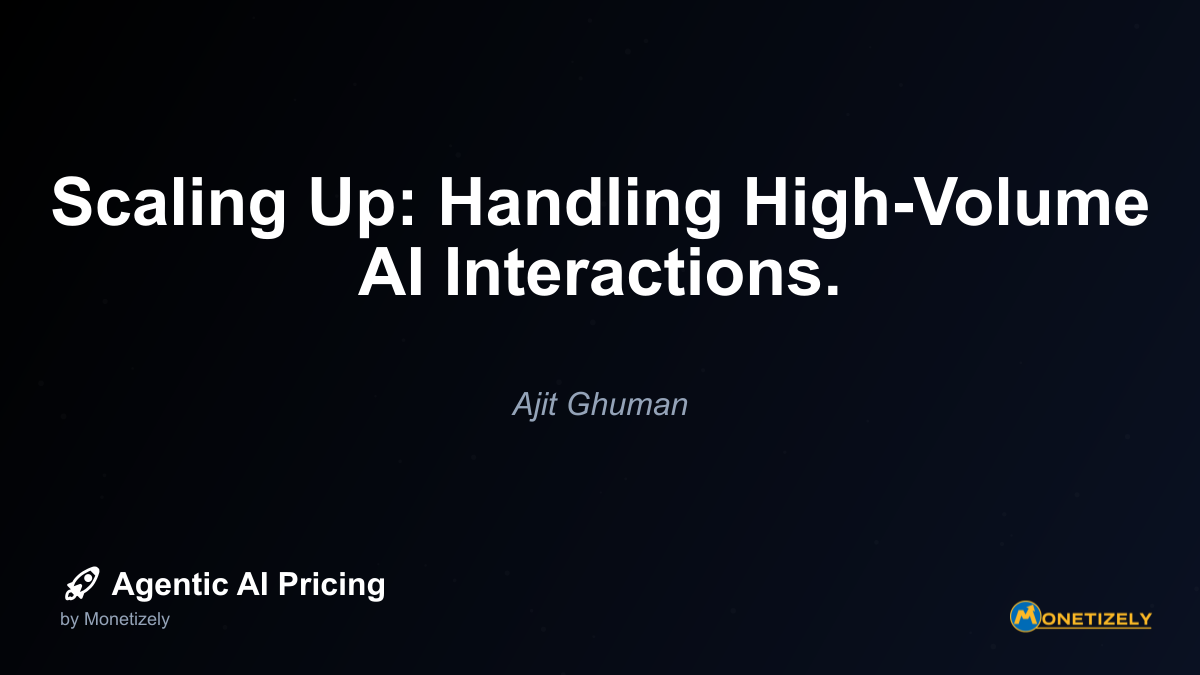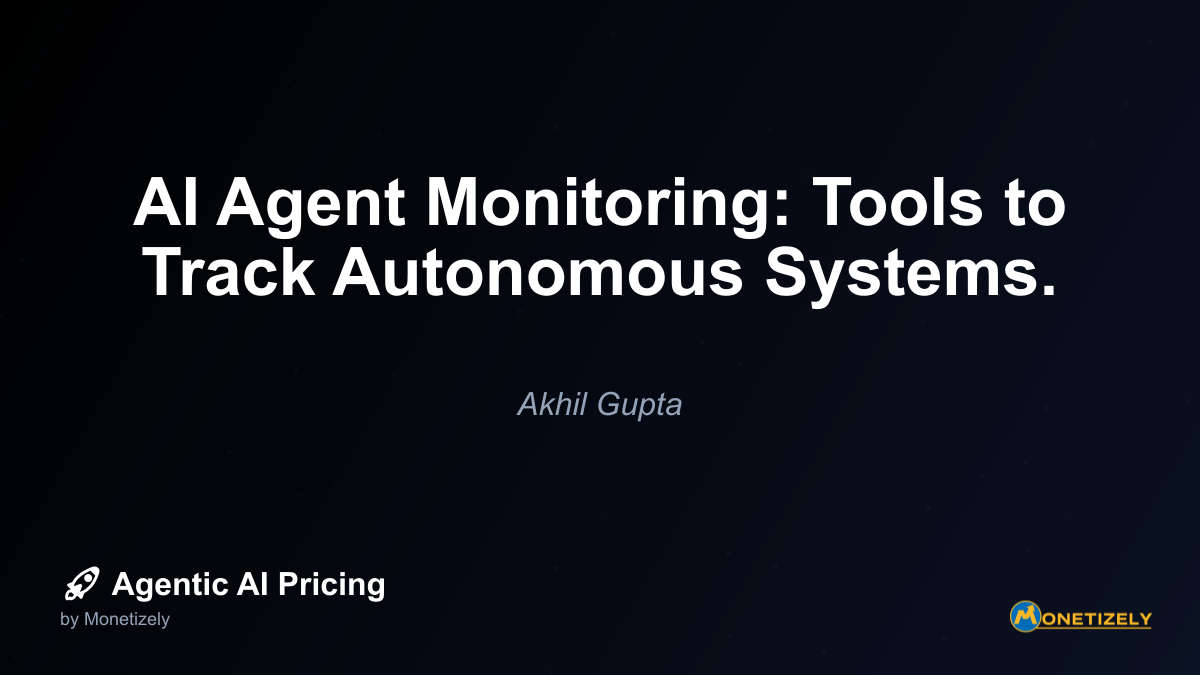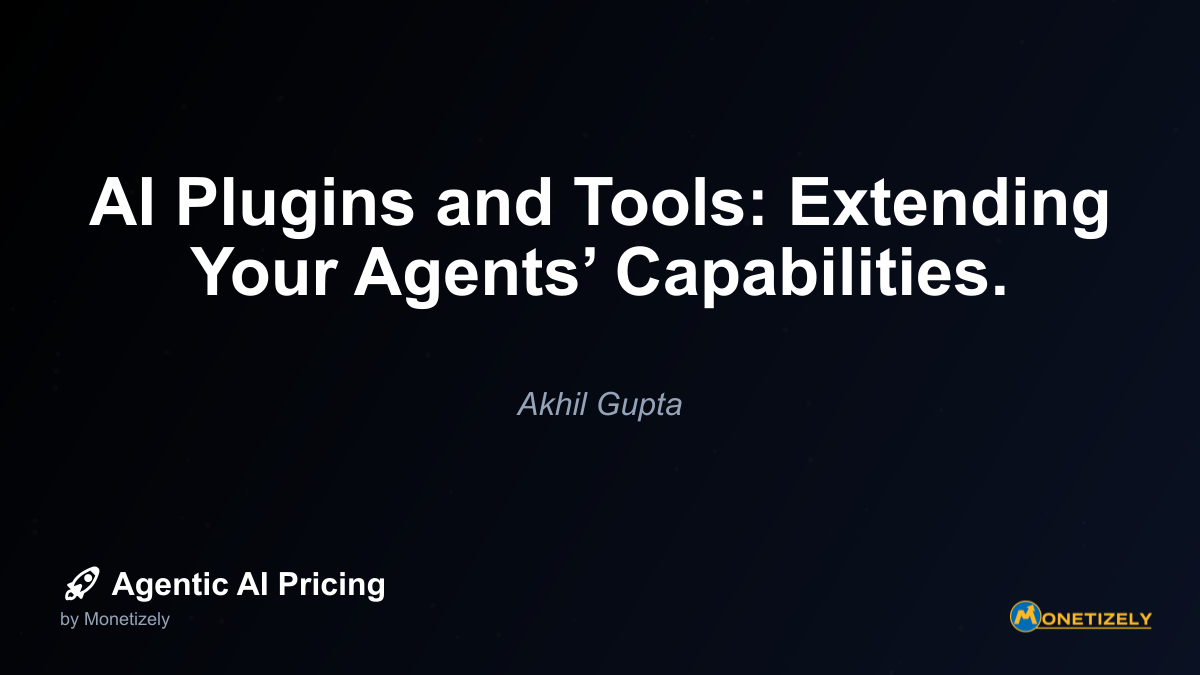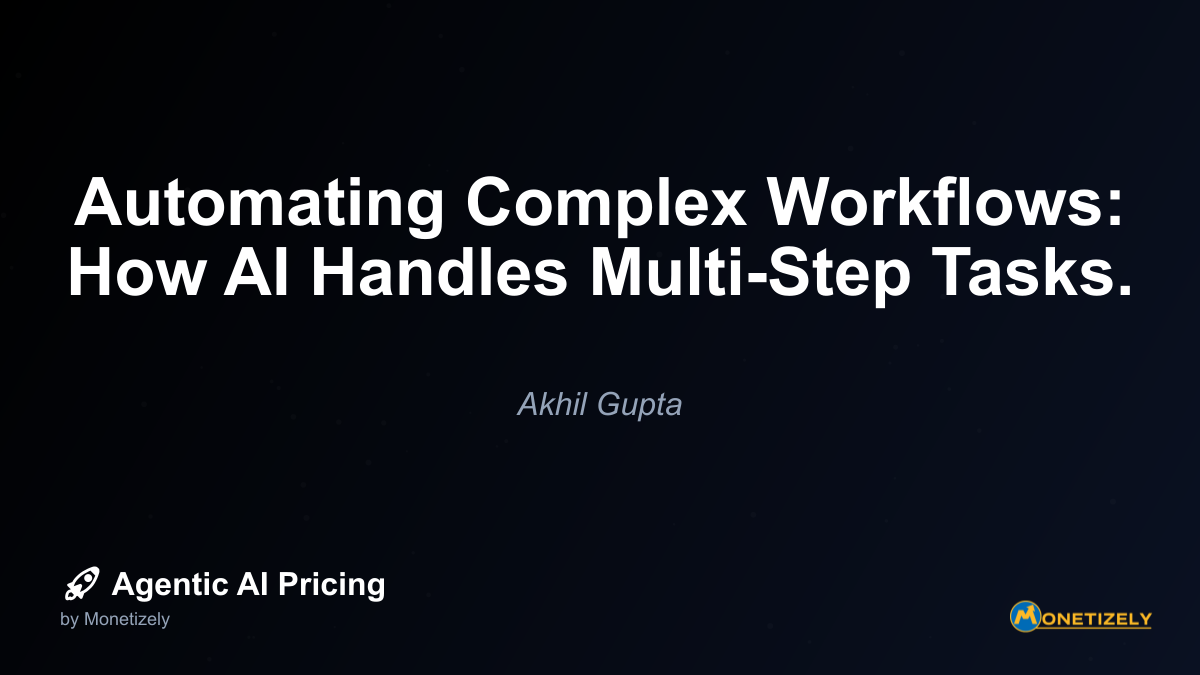· Akhil Gupta · Technical Insights · 9 min read
Latency and Speed: Why AI Response Time Matters.
AI and SaaS Pricing Masterclass
Learn the art of strategic pricing directly from industry experts. Our comprehensive course provides frameworks and methodologies for optimizing your pricing strategy in the evolving AI landscape. Earn a professional certification that can be imported directly to your LinkedIn profile.
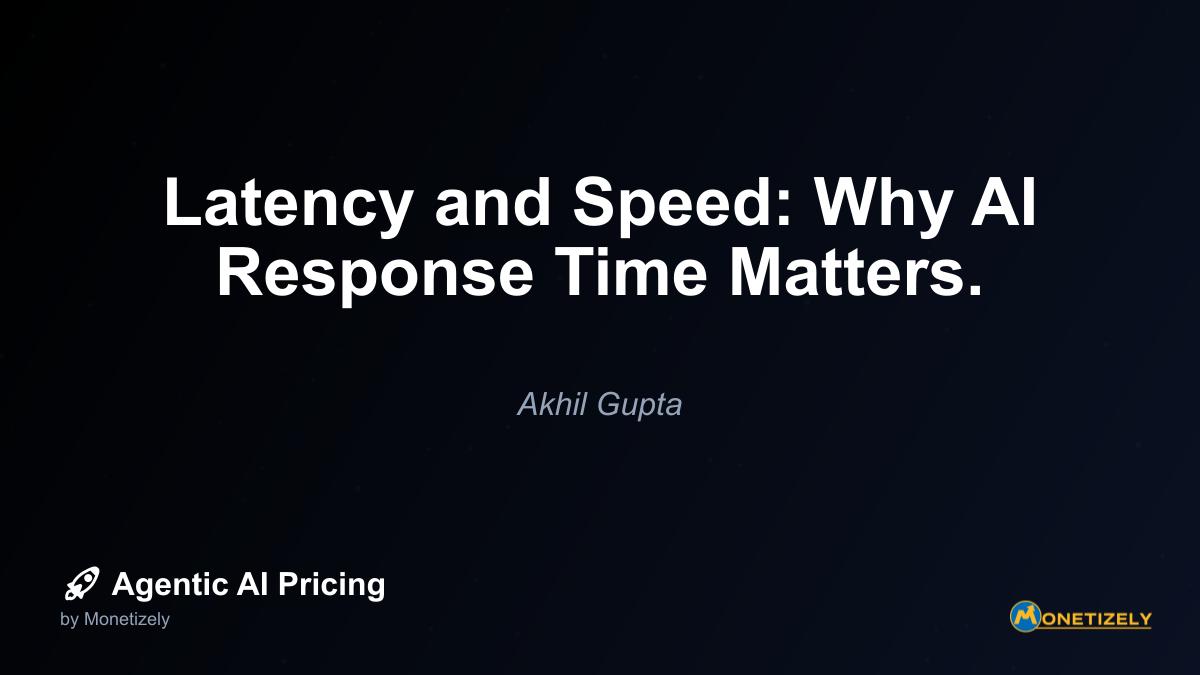
The Speed vs. Capability Trade-off in AI Pricing
One of the most significant challenges in AI pricing strategy involves balancing response speed against model capabilities. More powerful models typically require more computational resources, which increases both latency and cost. This creates a fundamental tension in pricing strategy that businesses must navigate.
The Premium Speed Tier Approach
Many AI service providers have adopted tiered pricing structures that explicitly acknowledge the value of speed. For example:
- Basic Tier: Larger response times (2-5 seconds) with standard capabilities
- Professional Tier: Moderate response times (0.5-2 seconds) with enhanced capabilities
- Enterprise Tier: Near-instantaneous responses (< 0.5 seconds) with premium capabilities
This approach recognizes that different use cases have different latency requirements. A customer service chatbot might require near-instant responses to maintain user engagement, while a document analysis tool might tolerate slightly longer processing times.
As explored in The AI Latency Factor: Real-Time vs Batch Processing Pricing, businesses must carefully consider how latency requirements affect their pricing models, particularly when distinguishing between real-time and batch processing options.
Response Time Guarantees as Value Propositions
Some AI providers have begun offering Service Level Agreements (SLAs) that guarantee specific response times. These guarantees become powerful value propositions, particularly for enterprise customers with time-sensitive applications.
For example, an AI provider might offer:
- 99.9% of requests processed within 200ms (premium tier)
- 99.5% of requests processed within 500ms (standard tier)
- 95% of requests processed within 1000ms (basic tier)
These guarantees create natural price differentiation while allowing customers to select the performance level that matches their requirements. The pricing premium for faster guaranteed response times directly reflects the additional infrastructure costs required to deliver this performance consistently.
Context-Dependent Pricing Models
The optimal balance between speed and capability depends heavily on the specific use case. This reality has led to the emergence of context-dependent pricing models that adapt based on the application’s requirements.
For instance:
- Time-Critical Applications (trading algorithms, emergency response systems): Premium pricing for guaranteed low latency, even if it means using slightly less powerful models.
- Depth-Critical Applications (scientific research, complex analysis): Premium pricing for model capability and accuracy, with more tolerance for latency.
- Hybrid Applications (customer service, content creation): Balanced pricing that optimizes for both reasonable speed and sufficient capability.
This approach acknowledges that the value of response time varies by context, allowing businesses to develop more nuanced pricing strategies.
Technical Strategies for Optimizing Response Time
Understanding the technical approaches to optimizing AI response time helps businesses make informed decisions about their investments and pricing strategies. Several key strategies can significantly improve performance:
Model Compression and Quantization
Model compression techniques reduce the size and computational requirements of AI models without significantly affecting their capabilities. These approaches include:
- Quantization: Converting model weights from high-precision formats (like 32-bit floating point) to lower-precision formats (like 8-bit integers)
- Pruning: Removing unnecessary connections within neural networks
- Knowledge Distillation: Training smaller “student” models to mimic the behavior of larger “teacher” models
These techniques can reduce model size by 75-90% while preserving 95-99% of their capabilities, dramatically improving response times with minimal impact on performance.
Distributed Inference Architecture
Distributing AI inference across multiple servers can significantly reduce response times, particularly for complex models. This approach involves:
- Horizontal Scaling: Adding more servers to process requests in parallel
- Model Sharding: Breaking large models into components that can be processed simultaneously
- Load Balancing: Intelligently distributing requests to optimize resource utilization
While distributed architectures improve performance, they also increase infrastructure complexity and cost. These costs must be factored into pricing strategies, particularly for premium, low-latency service tiers.
Caching and Pre-computation
For applications with predictable or repetitive queries, caching strategies can dramatically improve response times:
- Result Caching: Storing responses to common queries for immediate retrieval
- Pre-computation: Generating likely responses in advance during low-demand periods
- Predictive Loading: Anticipating user needs based on context and preloading relevant model components
These approaches can reduce response times from seconds to milliseconds for frequently requested information, creating opportunities for more competitive pricing in use cases with predictable patterns.
Edge Deployment
Deploying AI models closer to end-users—often referred to as edge computing—can significantly reduce network latency. This approach involves:
- Regional Model Deployment: Hosting models in data centers near user populations
- On-Device Inference: Running smaller models directly on user devices
- Hybrid Approaches: Combining on-device processing with cloud capabilities
Edge deployment introduces additional infrastructure costs but can dramatically improve user experience, particularly for global applications. These costs must be reflected in pricing strategies, often through regional pricing differentiation.
Industry-Specific Latency Considerations
Different industries have vastly different requirements for AI response time, creating opportunities for specialized pricing strategies. Understanding these variations helps businesses tailor their approaches to specific market segments.
Financial Services
In financial services, particularly trading and risk assessment, milliseconds can translate directly to financial outcomes. High-frequency trading algorithms require ultra-low latency, often measured in microseconds rather than milliseconds.
For AI providers serving this market, premium pricing for guaranteed low latency is not only accepted but expected. Financial institutions routinely pay significant premiums for speed advantages, making this sector particularly receptive to performance-based pricing tiers.
Healthcare
In healthcare applications, the balance between speed and accuracy is particularly delicate. Diagnostic systems must prioritize accuracy while still delivering results within clinically relevant timeframes.
Pricing strategies in healthcare AI often emphasize reliability and precision over raw speed, though certain emergency applications (like stroke detection) may command premium pricing for both accuracy and rapid response.
Customer Service
For customer service applications, response time directly impacts user satisfaction. Research indicates that customers expect chatbot responses within 5 seconds, with satisfaction declining rapidly beyond this threshold.
Pricing strategies for customer service AI often include tiered options based on guaranteed response times, with premium tiers offering sub-second responses for customer-facing applications.
Content Creation and Analysis
In content creation applications, users typically tolerate slightly longer response times (5-10 seconds) provided the quality justifies the wait. However, interactive editing tools require much faster feedback loops.
This creates opportunities for context-dependent pricing, where different aspects of the same service might be priced differently based on their latency requirements.
Practical Guidelines for Balancing Speed and Capability
For businesses implementing AI systems, several practical guidelines can help navigate the complex trade-offs between response time and model capability:
1. Establish Clear Latency Requirements
Before selecting or developing AI systems, establish clear requirements for acceptable response times. These requirements should consider:
- User expectations for the specific application
- Technical constraints of the broader system
- Competitive benchmarks in your industry
- Cost implications of different performance levels
These requirements become the foundation for evaluating the cost-benefit relationship of different approaches and inform pricing decisions.
2. Implement Tiered Performance Options
Rather than offering a one-size-fits-all solution, consider implementing tiered performance options that allow users to select the balance between speed and capability that best suits their needs.
For example:
- Fast Track: Optimized for speed using smaller models or cached responses
- Standard Track: Balanced performance for most use cases
- Deep Analysis: Prioritizing thoroughness and capability over speed
This approach allows for natural price differentiation while serving diverse user needs.
3. Monitor and Optimize Continuously
AI response time is not a static metric—it requires ongoing monitoring and optimization. Implement robust monitoring systems that track:
- Average response times across different request types
- Percentile distributions (95th, 99th) to identify outliers
- Correlations between response time and user engagement
- Infrastructure utilization and bottlenecks
This data informs continuous optimization efforts and helps identify opportunities for pricing adjustments based on actual performance.
4. Communicate Performance Expectations Clearly
Transparency about expected response times helps manage user expectations and reduces frustration. Consider:
- Providing visual indicators when processing longer requests
- Offering estimated completion times for complex operations
- Explaining the relationship between request complexity and response time
- Highlighting the benefits of premium performance tiers
Clear communication helps users understand the value proposition of different pricing tiers and makes performance differences more tangible.
The Future of AI Response Time and Pricing
As AI technology continues to evolve, several emerging trends will shape the relationship between response time and pricing strategies:
Hardware Acceleration Innovation
The development of specialized AI hardware—from improved GPUs to custom ASICs and neuromorphic computing—promises to dramatically improve inference speed while reducing energy consumption. These innovations will create new opportunities for performance-based pricing as the cost structure of high-performance AI changes.
Personalized Response Time Optimization
Advanced systems are beginning to adapt their performance characteristics based on individual user preferences and behaviors. These systems might prioritize speed for impatient users while focusing on depth and accuracy for those who value thoroughness, creating opportunities for more personalized pricing models.
Hybrid Cloud-Edge Architectures
The growing sophistication of edge computing, combined with powerful cloud capabilities, is enabling hybrid architectures that optimize for both speed and capability. These approaches will influence pricing models, particularly for applications that span multiple computing environments.
Quantum Computing Impact
While still emerging, quantum computing promises to solve certain complex problems exponentially faster than classical computing. As quantum capabilities become more accessible, they will create new paradigms for performance-based pricing, particularly for specialized applications in optimization, simulation, and cryptography.
Conclusion: Strategic Implications for AI Pricing
The relationship between response time and AI capability represents one of the most significant factors in developing effective pricing strategies for AI services. As businesses navigate this complex landscape, several key principles emerge:
Response Time as Value Differentiator: Speed increasingly functions as a primary value differentiator in AI services, justifying premium pricing tiers for optimized performance.
Context-Dependent Optimization: The optimal balance between speed and capability depends heavily on the specific use case, creating opportunities for specialized pricing strategies tailored to different applications.
Technical Investment ROI: Investments in response time optimization—through hardware, architecture, or algorithmic improvements—must be reflected in pricing strategies to ensure return on investment.
User Experience Alignment: Pricing tiers should align with meaningful user experience differences, where the performance improvements justify the premium price points.
Transparent Performance Metrics: Clear communication about expected performance helps users select appropriate service tiers and understand the value proposition of premium options.
As AI continues to evolve, the businesses that succeed will be those that effectively balance technical capabilities with user expectations, creating pricing strategies that reflect the true value of both powerful models and responsive systems. The art of AI pricing lies not in maximizing short-term revenue, but in aligning technical capabilities, user needs, and pricing structures to create sustainable value for all stakeholders.
In the competitive landscape of agentic AI, response time isn’t merely a technical consideration—it’s a fundamental component of the value proposition and a critical factor in developing effective pricing strategies. By understanding and optimizing this relationship, businesses can create more compelling offerings that deliver both technical excellence and commercial success.
Co-Founder & COO
Akhil is an Engineering leader with over 16+ years of experience in building, managing and scaling web-scale, high throughput enterprise applications and teams. He has worked with and led technology teams at FabAlley, BuildSupply and Healthians. He is a graduate from Delhi College of Engineering and UC Berkeley certified CTO.
Pricing Strategy Audit
Let our experts analyze your current pricing strategy and identify opportunities for improvement. Our data-driven assessment will help you unlock untapped revenue potential and optimize your AI pricing approach.

